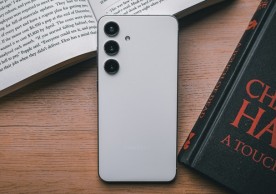Microsoft Windows 10 officially unveiled – Here’s the deal
Microsoft Windows 10 officially unveiled – Here’s the deal
Alexandra BurlacuMicrosoft has officially introduced the next major version of its popular operating system, which is called Windows 10, not Windows 9 as everyone expected.
The company was widely expected to take the wraps off its new OS on Tuesday, Sept. 30, and so it did. Instead of Windows 9, however, which was considered the logical name following the current Windows 8, Microsoft has now announced Windows 10. The move could be seen as a marketing scheme to distance the new OS from the overly criticized Window 8.
"One way to look at it is that Windows is a threshold :-). It's time for a new Windows. This new Windows must be built from the ground-up for a mobile-first, cloud-first world. This new Windows must help our customers be productive in both their digital work and their digital life. This new Windows must empower people and organizations to do great things. That new Windows is Windows 10," Microsoft said in a company blog post.
"Windows 10 represents the first step of a whole new generation of Windows. Windows 10 unlocks new experiences for customers to work, play and connect. Windows 10 embodies what our customers (both consumers and enterprise) demand and what we will deliver.
The new Windows 10 aims to deliver a tailored experience across a wide range of devices and hardware types, which means that the user interface and overall experience on a touch-centric device such as a tablet will be radically different of that of a desktop PC.
At the same time, while the Windows 10 experience will be tailored depending on hardware types, all devices running the OS will coexist on a single application platform. This way, developers will be able to write universal applications for the entire Windows family, and consumers will be able to find all apps in a single store. Moreover, that store will allow consumers to discover, purchase, and update apps across all devices.
Microsoft showed off an early Windows 10 build at its event and the new OS looks quite similar to the popular Windows 7, while also incorporating some elements from Windows 8. According to Microsoft's Joe Belfiore, the familiar look and feel of Windows 10 is absolutely intentional, as the company is trying to make it look easier to transition from Windows 7 to the new OS version. Windows 8 brought drastic changes when it launched a couple of years back, and many consumers were reluctant to make the switch.
Many will also be glad to learn that Windows 10 ditches the infamous "Metro" start screen, opting instead for a series of live tiles in the right side of the Start menu. The left side of the Start menu will have the usual bunch of pinned and frequently-used apps, along with web and app search functions at the bottom. Both the tiles and the Start menu will be resizable, and Microsoft even said that users will be able to expand the menu beyond the parameters of their monitor. More specifically, users will have the ability to scroll left and right to see a comprehensive list of apps and tiles.
An updated taskbar, meanwhile, will sport a new "task view" feature in Windows 10, which will display all apps running across each virtual desktop, while primarily showing the current desktop on screen. Users will be able to add more desktops and switch between them using the thumbnails on the lower portion of the screen.
As expected, Windows 10 also aims to be easy to use on touch-enabled devices, and it will still support touch controls such as the Charms bar. The new OS will also implement some touch features from Windows 8, but Microsoft has not detailed the specifics just yet.
In conclusion, Windows 10 will offer a tailored experience depending on hardware type, and many of the features will depend on device and control setup. On a tablet, for instance, the new OS will start in a manner that's more similar to the Metro UI found on Windows 8, delivering apps in full screen and pulling up a full page of live tiles upon pressing the start button. Hybrid devices and 2-in-1 machines with multiple control schemes, meanwhile, will benefit from Windows 10's Continuum system. A device such as the Microsoft Surface 3, for instance, will run one UI while its keyboard is connected, and enter tablet mode when the keyboard is removed.
The new Windows 10 will formally launch in late 2015 and Microsoft will deliver more details over the course of the year, but so far it looks quite promising.
"This week's announcements are just the first chapter of our conversation with customers about Windows 10 - with a focus on enterprise features (because enterprises have a need to evaluate software early on) and the desktop/laptop experiences," Microsoft further explains in its blog post. "Early in 2015 we'll introduce the consumer chapter and talk much more about other device types and more consumer features. We'll then continue the conversation with the developer chapter at our Build conference, and later in the year we'll release Windows 10 and look forward to some amazing new devices."
The company is also launching an Insider Program starting with Oct. 1, allowing tech-savvy consumers and IT professionals to try out the new OS first hand.
© Copyright 2020 Mobile & Apps, All rights reserved. Do not reproduce without permission.most read
more stories from Mobile
-
Google Messages Beta Unveils New Gallery Picker UI
Stay updated! Google Messages Beta introduces a fresh Gallery Picker UI. Explore it now for enhanced messaging experience.
ernest hamilton -
Samsung Initiates Development of One UI 7.0 Beta, Based on Android 15, for Galaxy S24 Series
Exciting news! Samsung has begun developing One UI 7.0 Beta, based on Android 15, for the Galaxy S24 series. Stay tuned for the latest updates.
ernest hamilton -
Pixel 8a's First Update to Introduce Google's AI Wallpaper Generator
Stay tuned for Pixel 8a's first update, introducing Google's AI Wallpaper Generator! Don't miss out on this exciting feature.
ernest hamilton -
Google Messages Expands: New Audio Recorder and Voice Moods Now Rolling Out
With Google Messages, you can now enjoy a new audio recorder and voice moods, enhancing your messaging experience. Check it out today!
ernest hamilton -
iOS 17.5 RC Release: Podcasts Widget Update, Enhanced Unwanted Tracking System, Repair State Mode, and More
The iOS 17.5 RC release brings several enhancements, including updates to the Podcasts widget, an improved unwanted tracking system, Repair State mode, and more.
ernest hamilton -
US Revokes Export Licenses to Huawei, Impacting Intel and Qualcomm Chip Sales
The decision to revoke export licenses to Huawei could have significant implications for chip sales by Intel and Qualcomm in the US.
ernest hamilton -
Samsung’s Next Flagship, Galaxy S25 Series to Introduce Innovative 'Battery AI' Feature
Experience innovation like never before with Samsung's upcoming Galaxy S25 Series, set to introduce the groundbreaking 'Battery AI' feature. Learn more in our latest article!
ernest hamilton -
Sony's Next Flagship Unveiled: Xperia 1 VI Promo Images Leak, Showcasing Triple Camera Setup and ZEISS Optics
The leaked promo images of the Sony Xperia 1 VI reveal exciting details ahead of its launch. Dive into the details in our latest article!
ernest hamilton
















